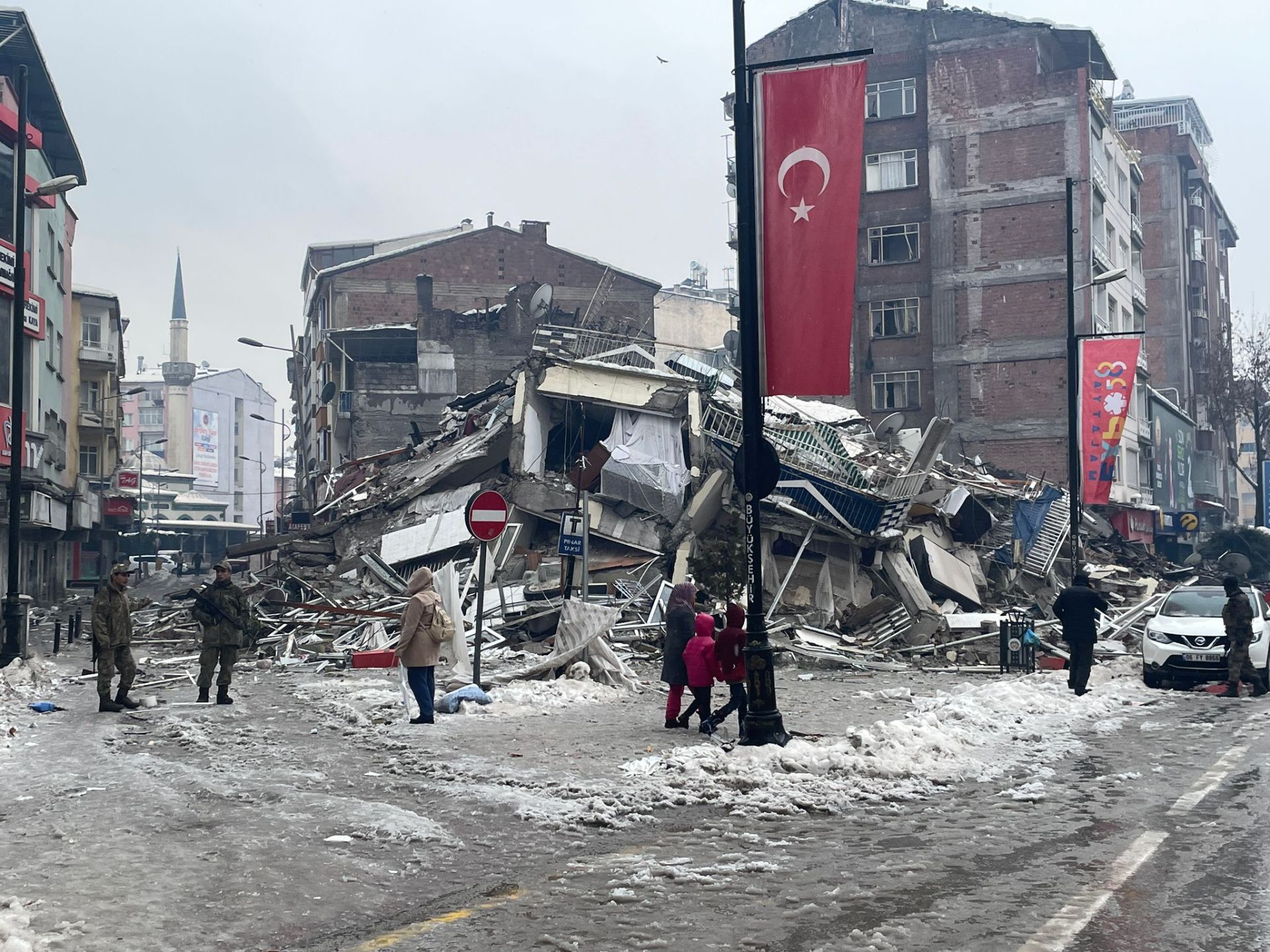Istanbul -
Despite the devastating effects caused by the earthquake that struck the cities of south-central Turkey and northern Syria, it was expected according to many specialists, while scientists and experts fear the occurrence of other earthquakes of the same intensity and high destructive force, calling for caution in densely populated areas and control on dams.
The magnitude of the earthquake at dawn today, Monday, was 7.8 on the Richter scale, followed by dozens of aftershocks, some of which reached a magnitude of 6.7, causing more destruction and leaving more dead and injured.
The government's Emergency and Disaster Agency "AFAD" warned of more aftershocks, some of which may amount to earthquakes with a magnitude ranging between 6.5 and 6.7 on the Richter scale.
Experts described the earthquake as the largest in Turkey's history since the devastating 1999 earthquake, which caused great damage to Istanbul and Kocaeli, which hosted the epicenter.
An expected earthquake
Despite the enormity of the losses caused by the recent earthquake in southern Turkey, it was not surprising for many Turkish geologists and seismologists, who have been warning over the past few years of devastating earthquakes, although most of the warnings are directed towards Istanbul, due to its high population density, Which makes any major earthquake threatens the lives of millions.
Some similar warnings were issued during the past few days of the possibility of an earthquake in the area that witnessed the "Kahramanmaraş" earthquake specifically.
The SSGEOS earthquake forecasting center had warned on January 30 of the possibility of strong seismic activity in that area, and many re-shared those tweets after the earthquake occurred.
Two major faults penetrate Turkey, the first is the North Anatolian fault, which extends from the outskirts of Lake Van in the far east to Istanbul in the west.
While the second starts from the point of convergence with the North Anatolian rift to the east and extends southeast through the states of "Bingol, Elazig and Kahramanmaraş" to "Hatay".
Sooner or later there will be a ~M 7.5 #earthquake in this region (South-Central Turkey, Jordan, Syria, Lebanon).
#deprem pic.twitter.com/6CcSnjJmCV
— Frank Hoogerbeets (@hogrbe) February 3, 2023
Bu depremden sonra Adana ve Hatay'a dikkat edilmeli.
Yerel yöneticiler uyanık olmalı.
Geçmiş olsun.
Olen insanlarımıza Allahtan rahmet, yaralılara şifalar dilerim
— Prof.
Dr.
Naci Görür (@nacigorur) February 6, 2023
Previous warnings
For his part, a professor specializing in seismology in Turkey, Naci Gurur, stated in television interviews that he had repeatedly warned in the past of the possibility of severe earthquakes along the seismic fault called the "South Anatolian Fault."
Gurur said that the northern Anatolian rift has witnessed several earthquakes of moderate intensity in recent years, and a number of them were in the vicinity of Istanbul, which makes the possibility of a severe earthquake along this rift less.
As for the areas located on the outskirts of the southern Anatolian rift, they are highly vulnerable - according to Gurur - to devastating earthquakes "because of the accumulation of potential energy between the tectonic layers that meet at the seismic rift."
He pointed out that a group of researchers at Istanbul Technical University warned - in a study published recently - that the "Malatya" rift area, branching from the main rift in southern Anatolia, had not witnessed earthquakes of high intensity for about 1,500 years, which means that it is vulnerable to earthquakes of this kind. .
The Turkish scientist said that the region of Kahramanmaraş and its vicinity, as well as the area between the state of "Elazig", especially the region of "Severce" and the state of "Adiman", is a region that has witnessed violent earthquakes historically and at a frequent pace.
He added, "As a result of the long time elapsed since the last wave of earthquakes, and because it has become seriously and dangerously exposed to such earthquakes, I called for caution and doubling the durability of buildings in urban areas in these areas."
Professor Gurur warned, on his Twitter account, that after the "Kahramanmaraş" earthquake, the residents of "Adana and Hatay" - which are located a little to the west of it - should take care, calling on local officials to remain vigilant.
He also launched an appeal to Turkish officials to work to control and control the dams in the region.
Adana and Hatay
For his part, Turkish geophysics professor Ovgun Ahmed Ercan confirmed that "Adana and Hatay" are now more vulnerable than before to similar earthquakes.
"The focus of the upcoming earthquake has shifted to the south, and Osmaniye, Adana and Hatay have entered high-frequency areas. Moderate earthquakes can be expected here," Ercan said on his Twitter account.
However, he noted at the same time that "it is too early to expect a major earthquake" in these areas.
The danger of earthquakes in this region lies in the fact that it is densely populated.
"The earthquake happened near the Syrian border, in a very densely populated area, so even before we get information, you know it's not going to be good," seismologist Stephen Hicks wrote in a tweet.
Hicks emphasized that according to the news and preliminary images, it is clear that the earthquake will be recorded as one of the largest earthquakes that occurred in a residential area in the history of the globe.
The earthquake caused the destruction of a large number of homes and roads in Turkey and Syria, and left hundreds of dead and injured so far, and search operations and the extraction of those trapped under the rubble are still ongoing.
Doğu Anadolu Kırık Kuşağı üzerinde Türkoğlu kolu kırılmıştır.
Gelecek deprem odağı güneye kaymış, Osmaniye, Adana, Hatay yüksek çekinceli alan içine girmiştir.
Buralarda orta büyüklükte deprem beklenebilir.
Büyük deprem için henüz erken.
— Prof.
Dr.
Övgün Ahmet Ercan (@ovgunaercan) February 6, 2023

